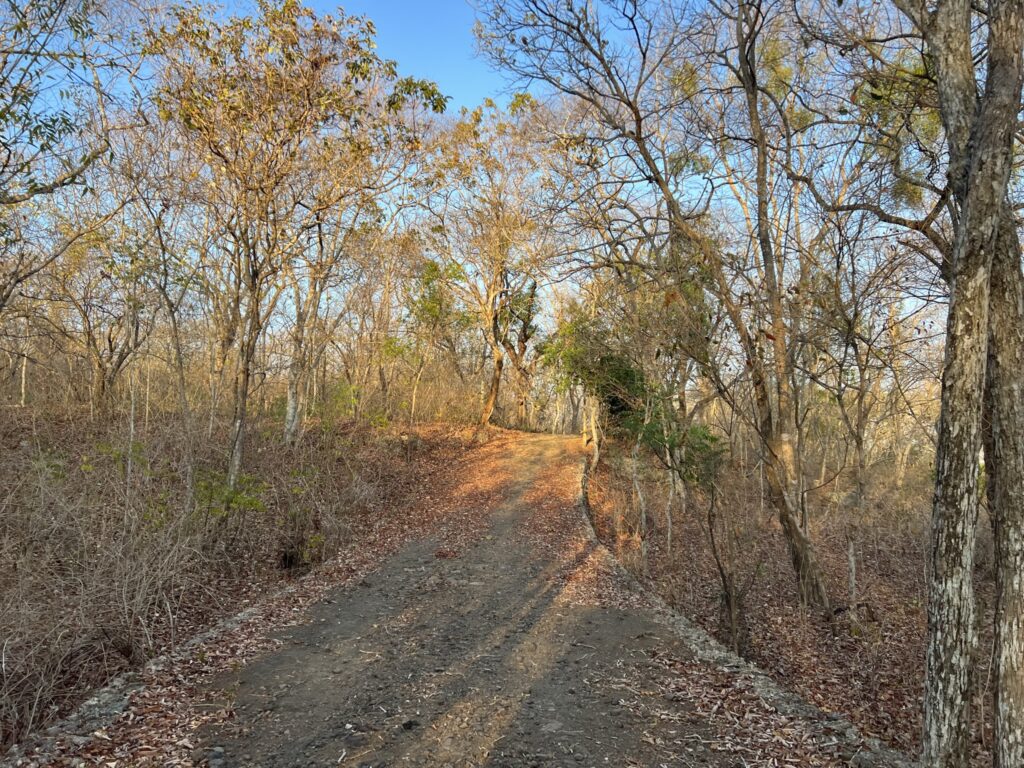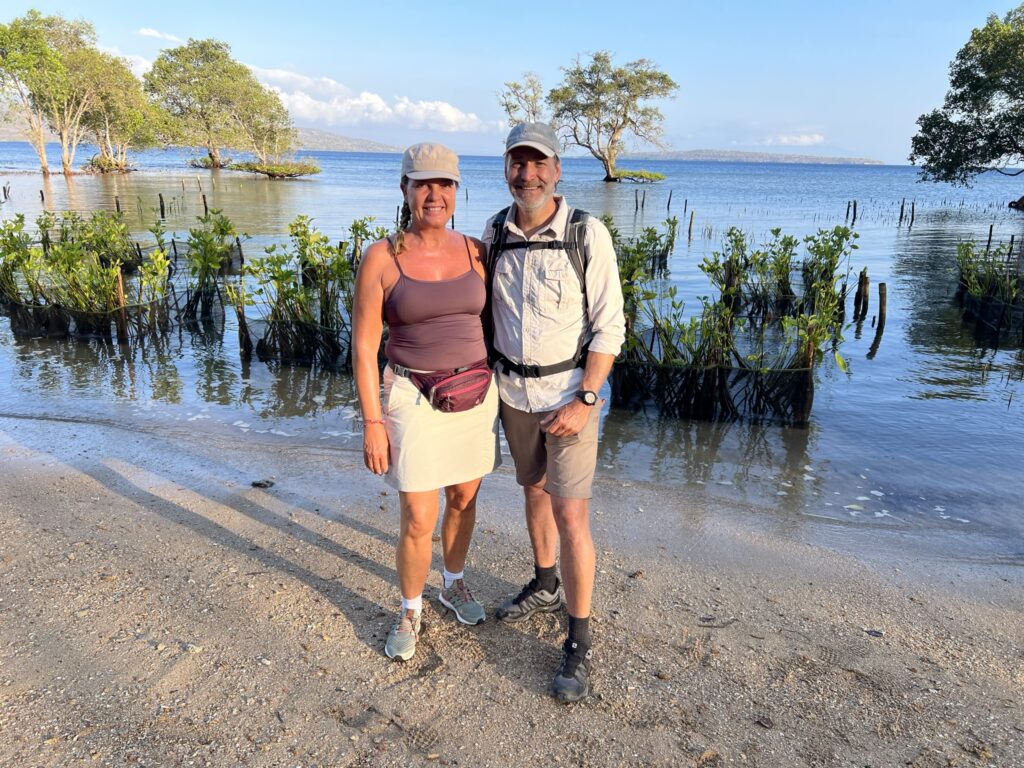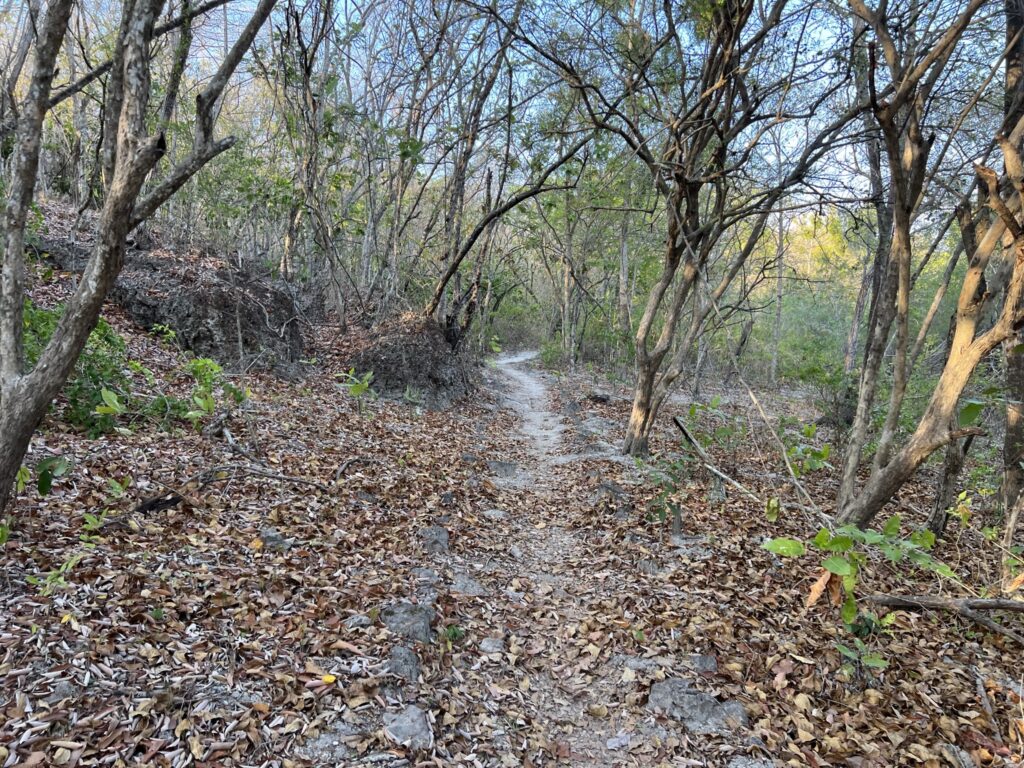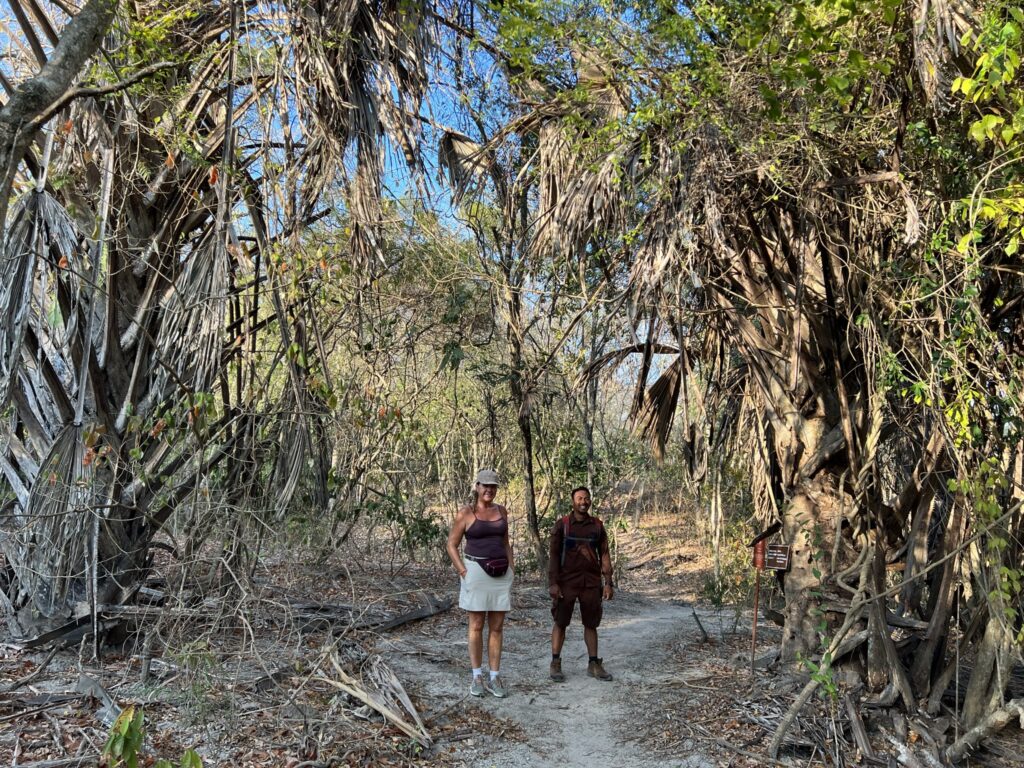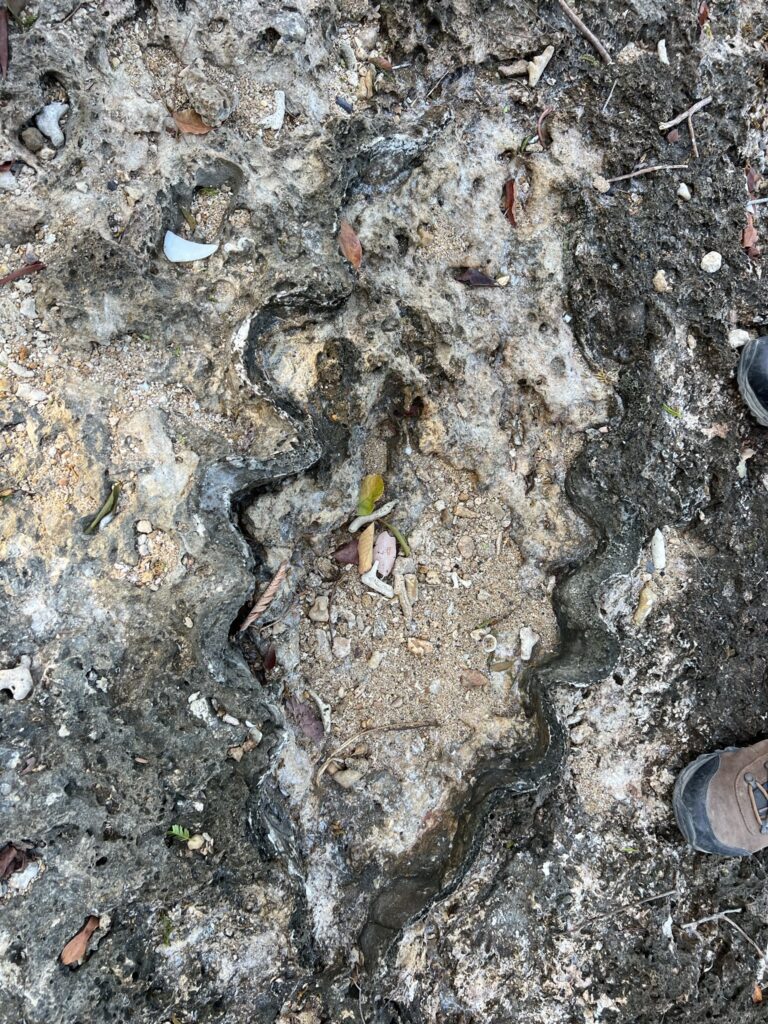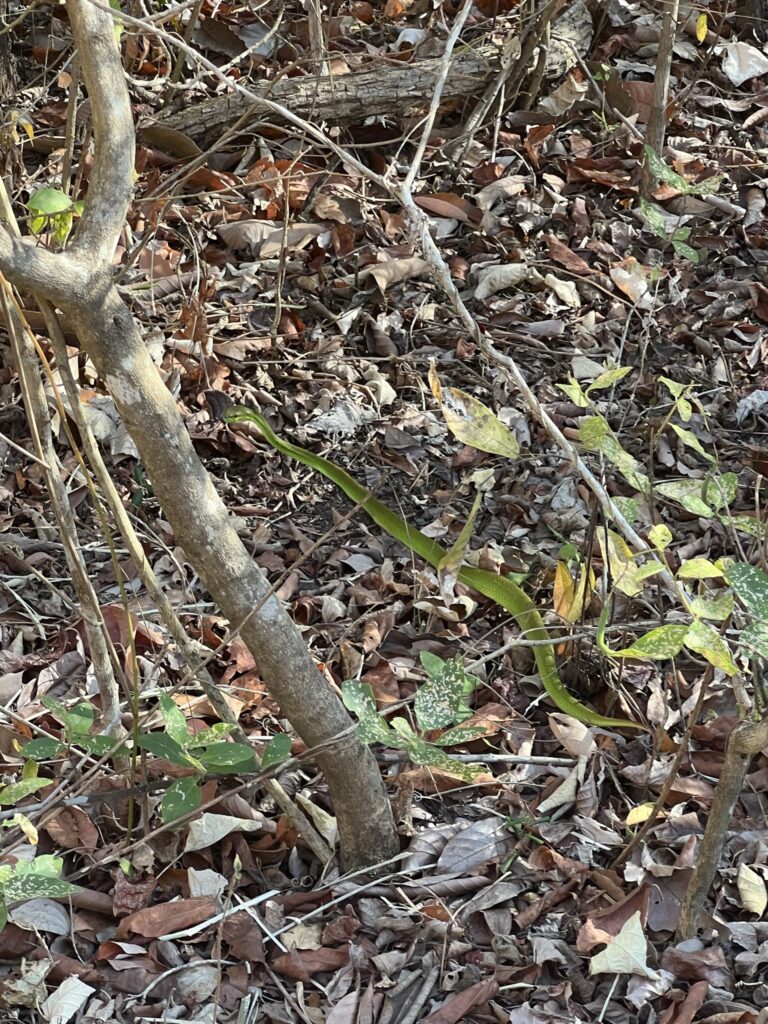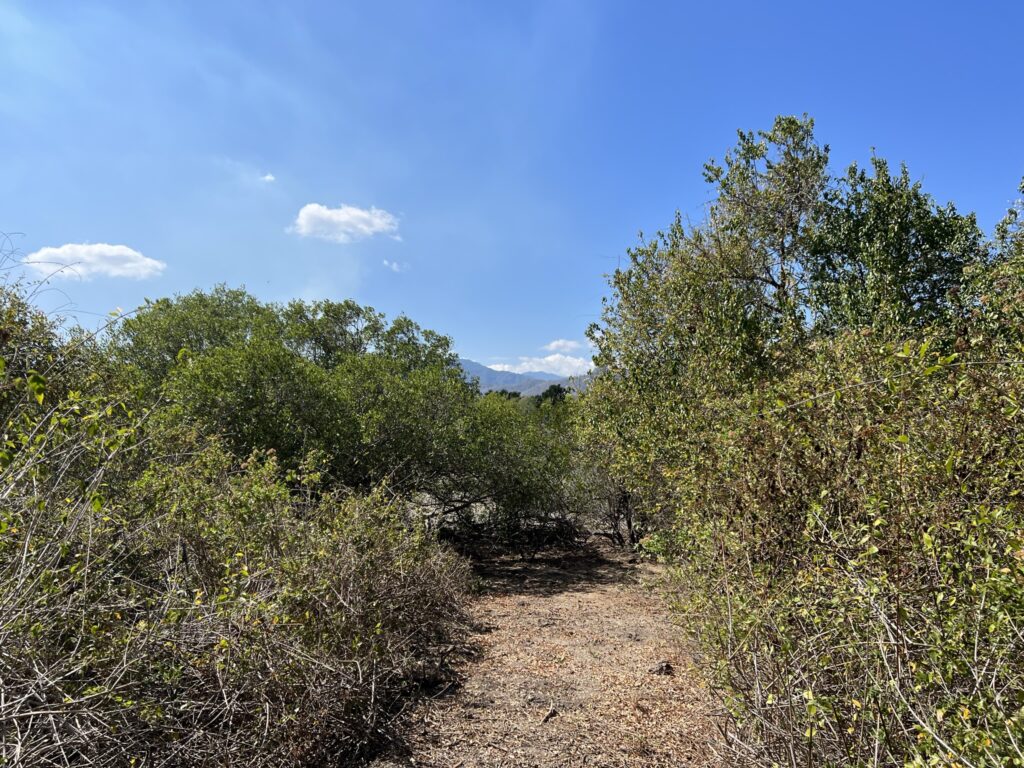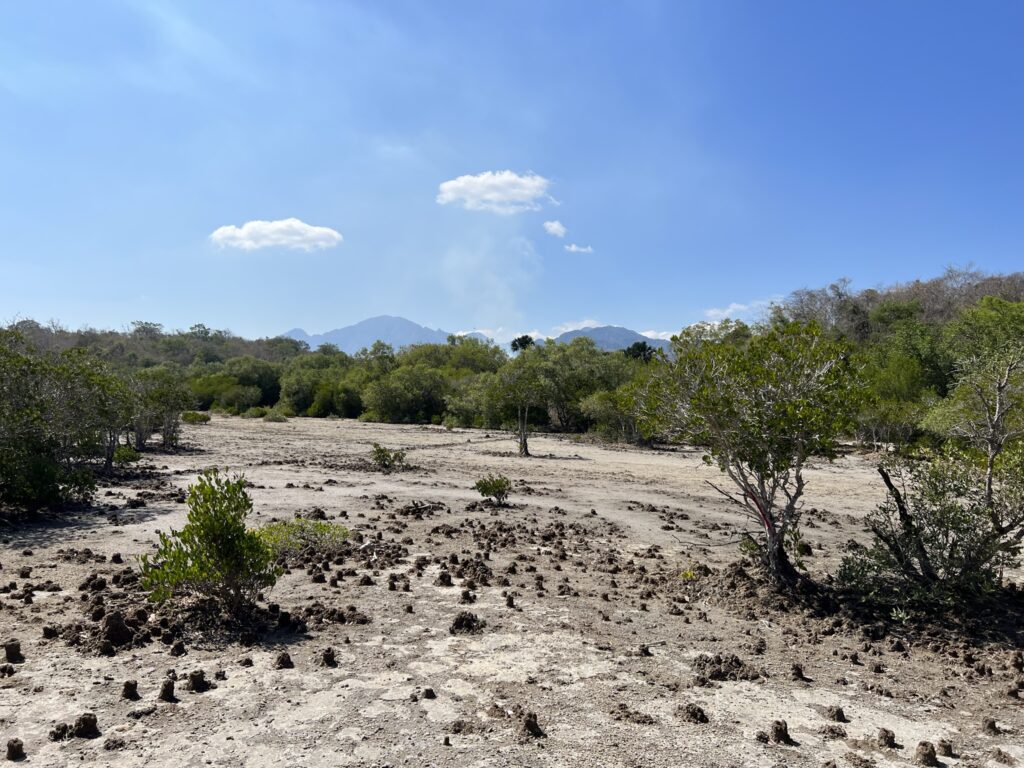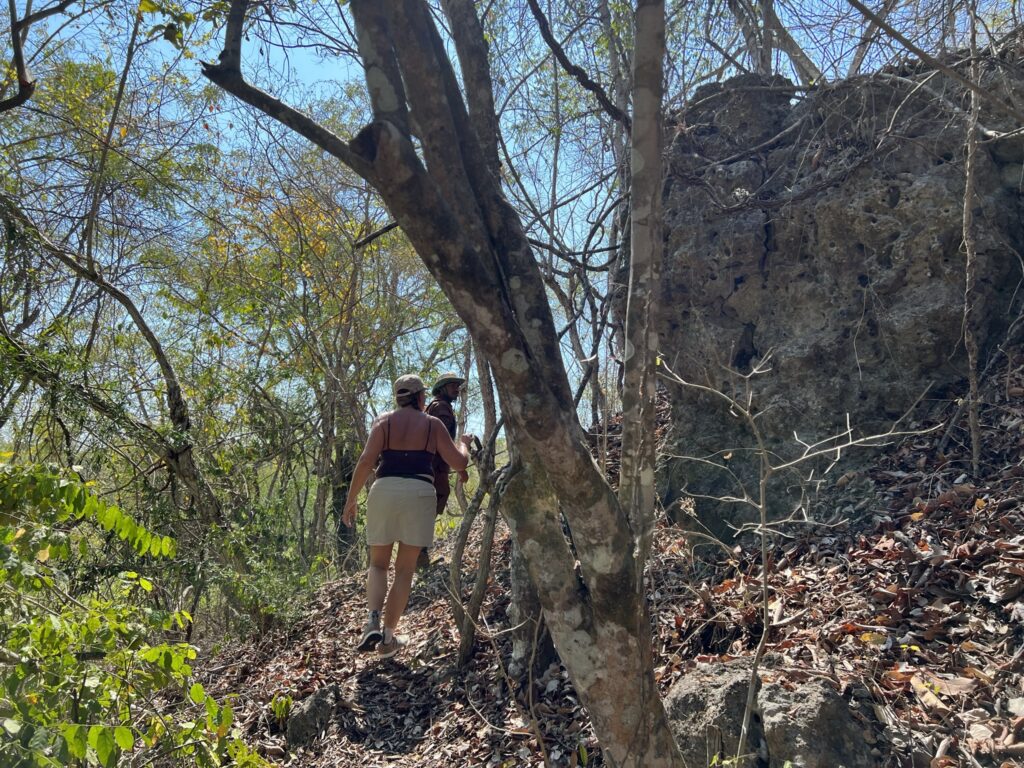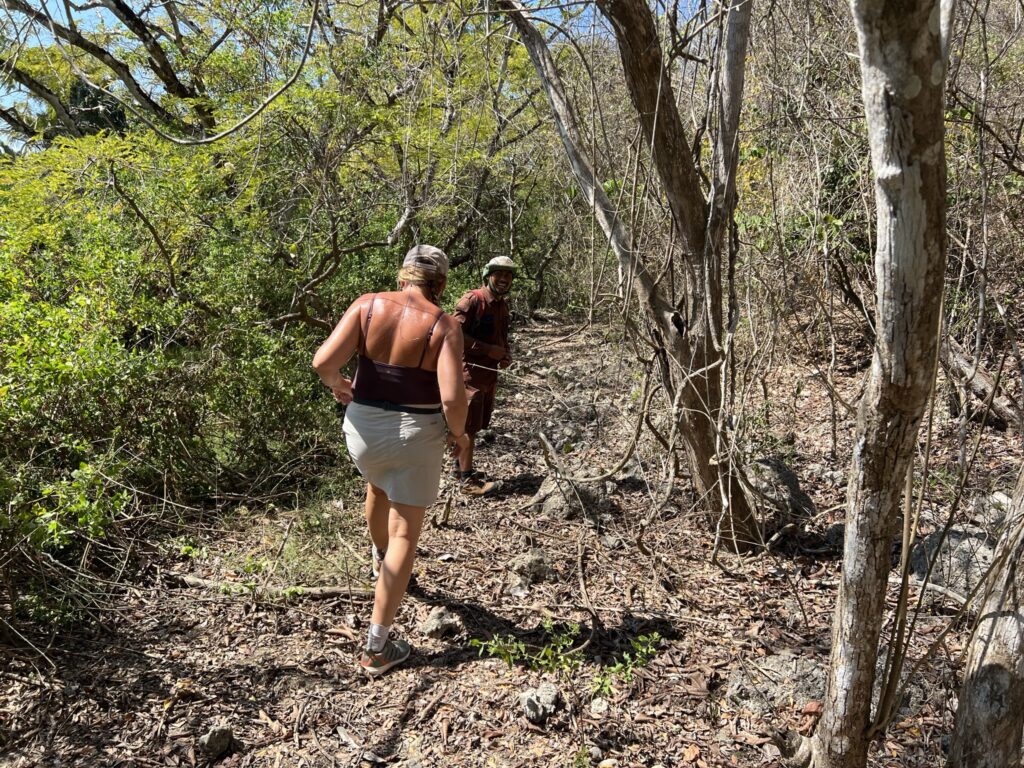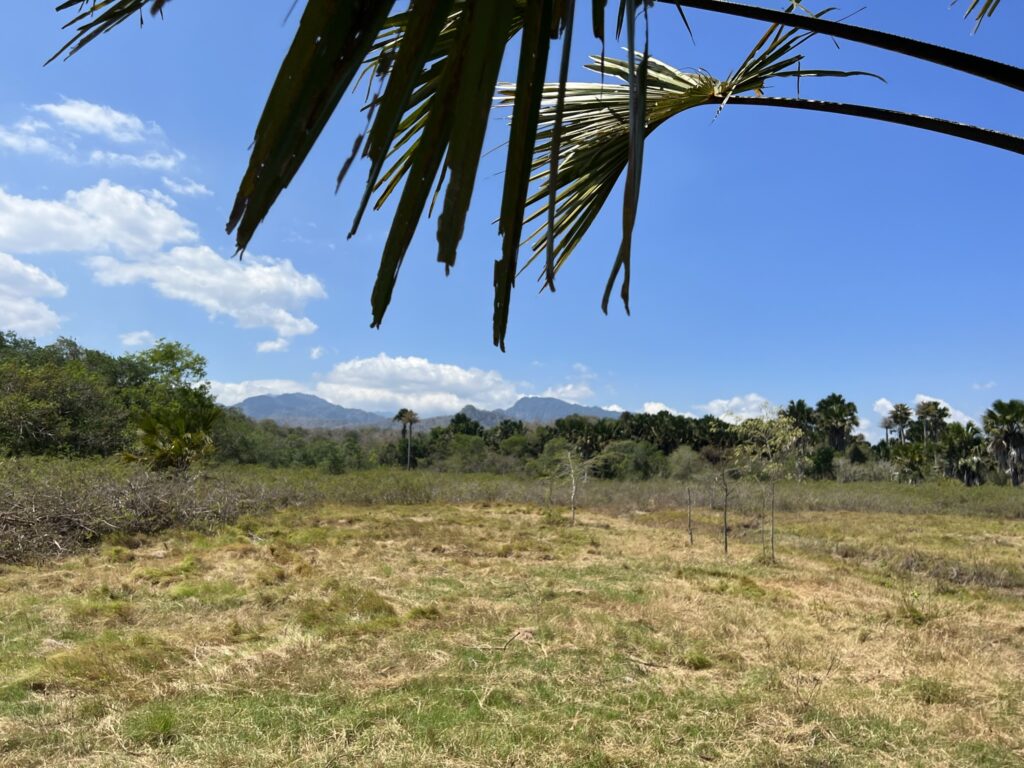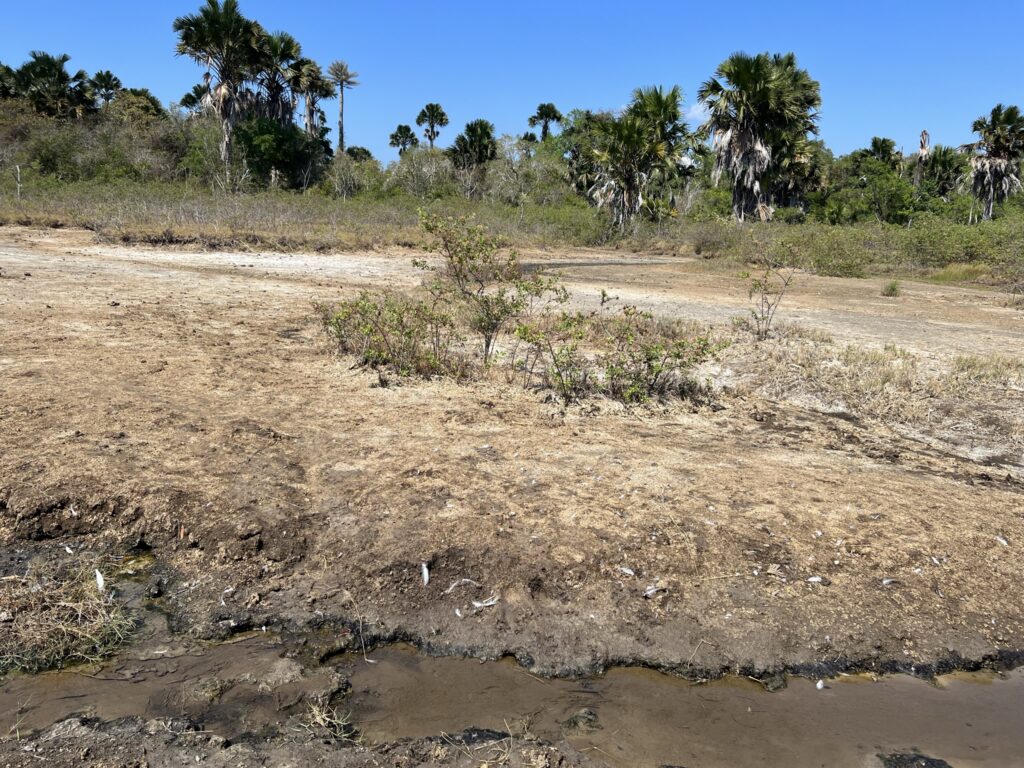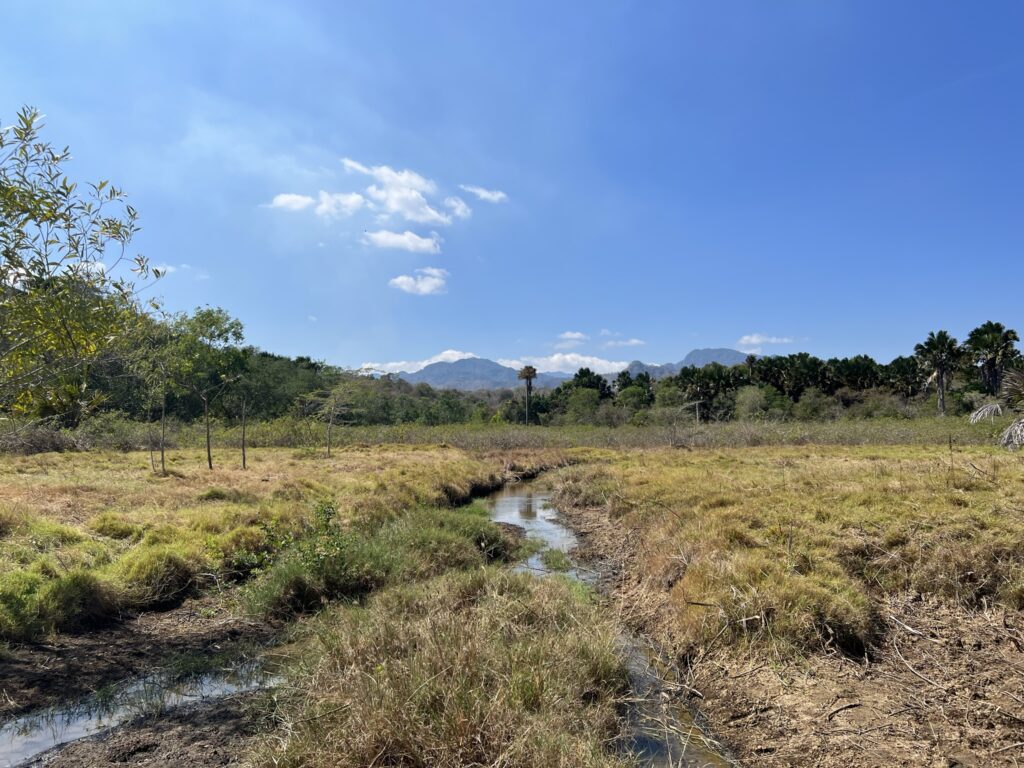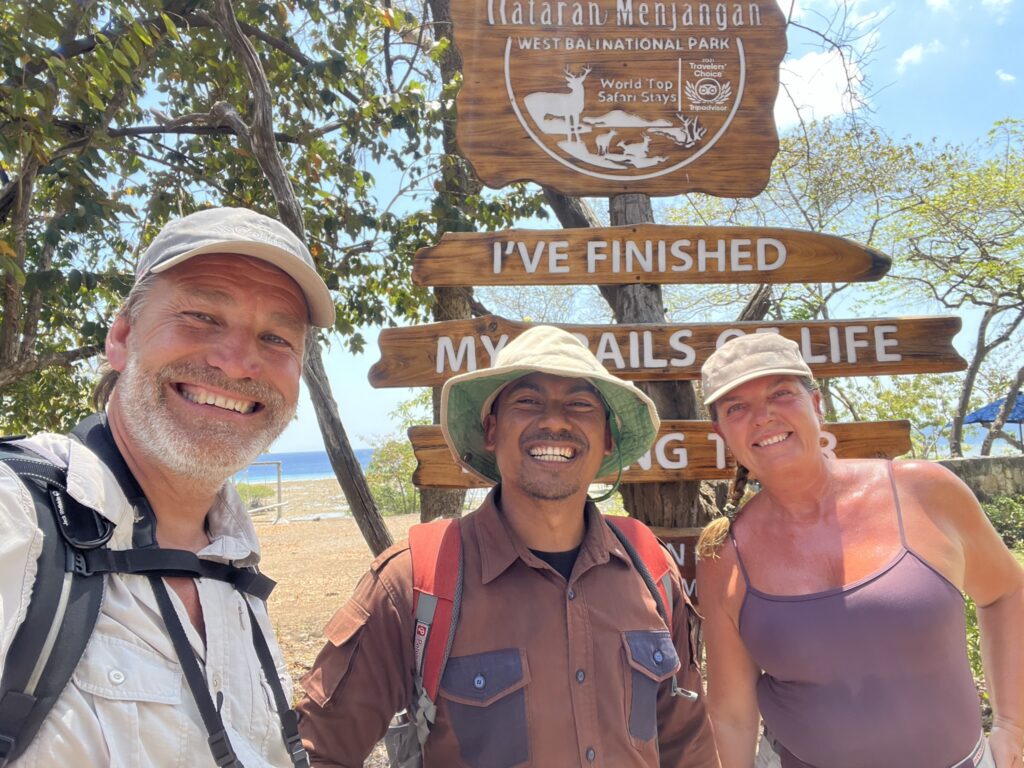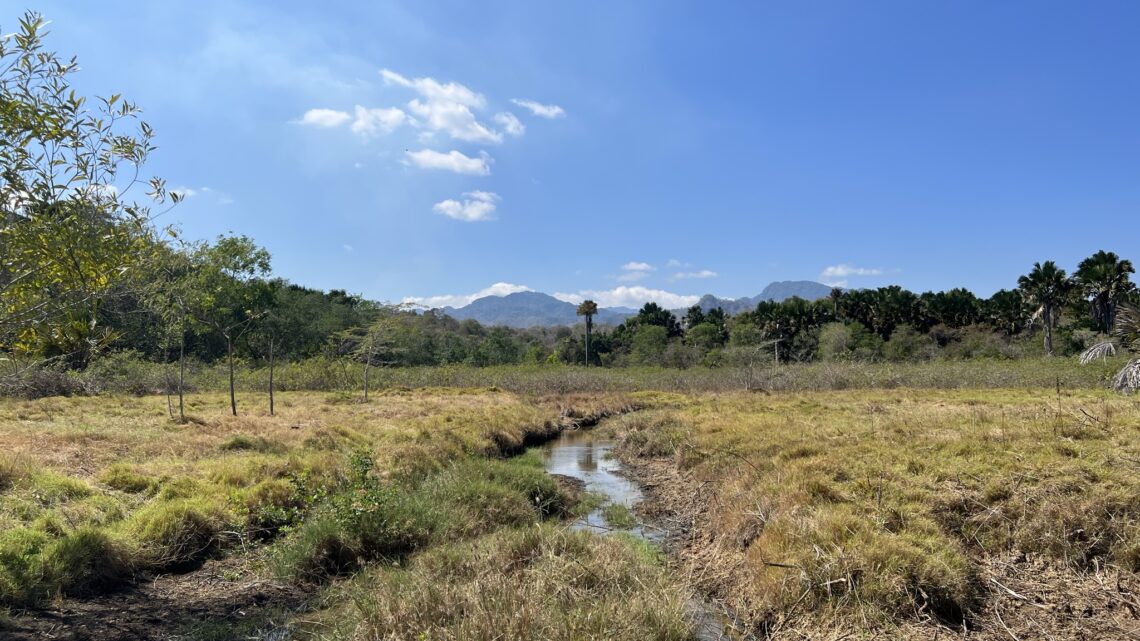
West Bali National Park – Trails of Life+savanne. 8 km.
In West Bali National Park is Plataran Menjanganlocated, which is one of the most beautifully located hotels we have ever experienced. The national park covers an impressive 190 square kilometers of area, of which Plataran Menjangan looks after and maintains approximately 3.8 square kilometers. Therefore, more than 20 rangers and gardeners are employed. They are responsible for looking after the large area and making sure that new mangrove trees, and other trees are planted in the jungle and that the animals are well.
Our tour is made in collaboration with the responsible ranger Gede Muliada, and has never been walked before. We start from the hotel lobby, where we of course are joined by our ranger, Gede, who tells us that we start our hike by following the "Trails of life", which is a route that symbolizes a person's life stages, from child to adult. The first thing we do is cross past a sign that says "Don't enter" – It starts well. We walk on an old stone and gravel road that is finely marked with curbs. The road winds and meanders for the first kilometre, and we can see in several places how the landscape is characterized by a lot of water during the rainy season. The path is filled with holes, which turn out to be crab holes. If there is wet sand outside the hole, the crab is at home – if there is no wet sand, the crab is not at home.
After 1 kilometre of walking, we come down to the water, where we can see how small groups of new mangrove trees have been planted at the water's edge. The mangrove trees are important for the ecosystem in Bali (and for the rest of the world). The mangrove has several purposes. They absorb far more CO2 than ordinary trees, just as they protect the coasts from the sea and the waves. Plataran Menjangan has a whole program that they call "Plataran For The Earth", which includes, among other things, planting new mangrove forest.
We continue along a small gravel path into the forest again, and come to a place where there is a large palm tree on each side of the path. Our ranger tells us that these palm trees live for up to 80 years. They bloom only once in their lifetime and die immediately after blooming. We see quite a few small birds, all of which have the characteristic that they have very strong colors somewhere on the body. After almost 1.5 kilometers of walking, we come back down to the water. Here we will have our inlaid breakfast picnic. The word picnic does not at all cover the setting, service and view – It will be difficult to live up to in the future, but can definitely be recommended.
After a hearty breakfast consumed in paradise, our hike continues. Before we leave the beach, our ranger shows us how the soil is a wonderful mix of lava, coral and fossils. We see a mega-large clam sitting in the ground with only its jaws sticking up. The trip along the coast shows us how important the mangrove is, and we can almost imagine how it helps to stem the sea and the waves. We come across several crab holes, and our ranger tells us that the crabs can go all the way up to 2 kilometers inland.
Suddenly, our ranger stops and tells us not to get any closer. He has spotted a Red-tailed Green Snake relaxing in the middle of the trail. We wait until our ranger has carefully followed the snake on its way before continuing. The snake just manages to rise menacingly towards us as we rush past.
After that experience, we look down more than up, even though our ranger assures us that it is extremely rare for that particular snake to be down from the trees at all. After about 2 kilometers of walking, we come out to a dirt road, where we turn left. Mede shows us four colorful figures that are a bit reminiscent of our garden gnomes at home, but he tells us that they symbolize 4 human characters. The first "Pragina", which is a symbol of honesty and kindness, The second "Sangut", which is a symbol of politics, or more precisely, life strategy. The third is "Nak Bagus", which is a symbol of leadership, and the last/biggest is the "Tual", which is the most important character in our lives, namely wisdom. The philosophy behind it is that when half of our life journey is reached and we are able to accommodate and live with all 4 characters, the quality of our lives will be better. A beautiful philosophy, and very characteristic of Balinese.
We are on our way to the "Tree nursery facility", which turns out to be our ranger's own little nursery out in the middle of the forest. Many of the trees and plants that are later put into the forest are grown here. We haven't gone much further before we get to another little special place. A small house in the middle of the forest with 8-10 aviaries, where Plataran Menjangan has set out to ensure the survival of the very rare and endangered bird – Bali Starling.
After approx. 3.4 kilometers of hiking the trail "Trails of Life", we now turn off the trail and embark on a trail that has been made especially for Danish Hikings. It is really exciting to see what this route offers, but we have been promised that we will go out and see a savannah. In some places, the path is barely visible, but our ranger knows which way to go.
We cross through hollows and mangrove forests, and suddenly a kind of plain opens up in front of us. At first we think it is the savannah, but we are told that it is just a large area where vegetation cannot grow, as the soil is covered with a thin layer of rock. On the other hand, there are many crab holes, which testifies to the fact that we are quite close to the water after all. The many mangrove trees in the area also testify to this. Mede says that during the rainy season there is water in the area. We cross the open area, and again enter the dense forest. Here we again move on a narrow and almost invisible path that we would never have found without our guide.
We are going over a smaller hilltop, where the path is again almost invisible, and on the other side of the hill we are going down into the forest again. We have gradually zigzag so much that our otherwise good sense of place is quite round. The area we walk in is constantly changing from forest to dense scrub, but we can see in a few places where the rangers have cleared so we can have our hike.
As we round a bend on the trail, the savannah opens far and wide in front of us. There is a small stream running through the savannah, and we can see the beautiful mountains in the background. In the stream, small fish swim, which shows us that it is very clean. Mede tells us that, just like on the African savannah, animals come and drink from the waterholes in the evening. It is incredibly exciting to stand on the savannah, which Mede calls "Tessa and Klaus Savannah" – probably mostly because he has never had guests out there before, but also because we have inspired them to make a hike that includes a tour of the savannah – It's pretty cool!
We sit in the shade of two large palm trees, and Mede serves a small rice-banana snack made by his wife, which is rolled into a piece of palm leaf. It's Bali's answer to an energy bar, and it tastes great. As we sit and enjoy the view, Mede tells us that as a boy he always walked in the woods and that he was lucky to get a job with Plataran when he left school. For him, this has meant that he can now afford to give his own children a better education.
In the sky, we suddenly become aware that there are two white-breasted sea eagles hovering. An impressive sight that completes our little break.
Our break is complete and we have once again been enriched with knowledge about the life and living conditions of the local population. We head back across the savannah and get back to the dry area pretty quickly. Here we cross over and re-enter the path made especially for us. We follow it back about 2 kilometers, after which we come out on a larger dirt road, which leads us back towards our starting point. On the way we meet a sign that says "What doesn't kill you makes you stronger". The sign is put up by the director's daughter, and we can easily relate to that. The tour ends at the Oxtagon restaurant, which is just 300 meters from our starting point.
We have walked on part of the "Trails of life", hiked on the "Tessa and Klaus Savannah" and finished the hike by making our own "Circle of life" – It can hardly be better.
The tour is 8 kilometers long, and hiking in about 30 degree heat, the tour took about 4 hours with all stops factored in.
Click on the map below and it will open in Google Maps. From here, you can follow the route as you are hiking. (NB endnu ikke tilgængeligt)




